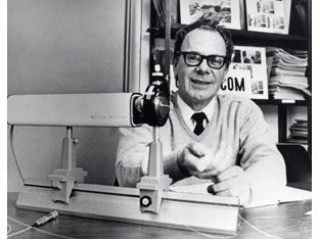
Gordon Gould biography
Date of birth : 1920-07-17
Date of death : 2005-09-16
Birthplace : Manhattan, New York
Nationality : American
Category : Science and Technology
Last modified : 2011-10-03
Credited as : Inventor, ,
1 votes so far
Adapting principles of the maser to the optical range, physicist Gordon Gould conceived of the laser, and invented its identifying acronym ("light amplification by stimulated emission of radiation."). In the earliest days of the idea, Gould discussed his conception with Charles H. Townes, inventor of the maser, but Gould misunderstood patent law and believed he needed to construct a working model of the laser before he could apply for a patent. His work predated Theodore Maiman's laser-related work, and predated Townes and Arthur L. Schawlow's patent for the laser in 1960, but despite three decades of legal claims that he had invented the concept, Gould was unable to win his legal challenge to Townes and Schawlow's patent.
He was also unable to work on the laser's initial development as much as he wanted to, due to security issues arising from what now seem absurd worries over his one-time association with a Marxist study group. He worked on the Manhattan Project during World War II, separating uranium isotopes for the super-secret US endeavor to build atomic weapons, but was fired from City College of New York for refusing to name purported communists among his past associates. He convinced a private research company, TRG (Technical Research Group), to pursue his ideas for the laser, but because much of the firm's funding came from the US military he was blocked from working on the project himself.
Gould was able to patent an optically pumped laser amplification, in 1977, and received patents for further laser developments including the gas-discharged laser, which is fundamental to operation of supermarket scanners. These patents made Gould a millionaire in his latter years, and many scientists and historians maintain that he deserves credit as the inventor of the laser. At his death in 2005, an obituary in the New York Times described Gould as a "figure in the invention of the laser".
















